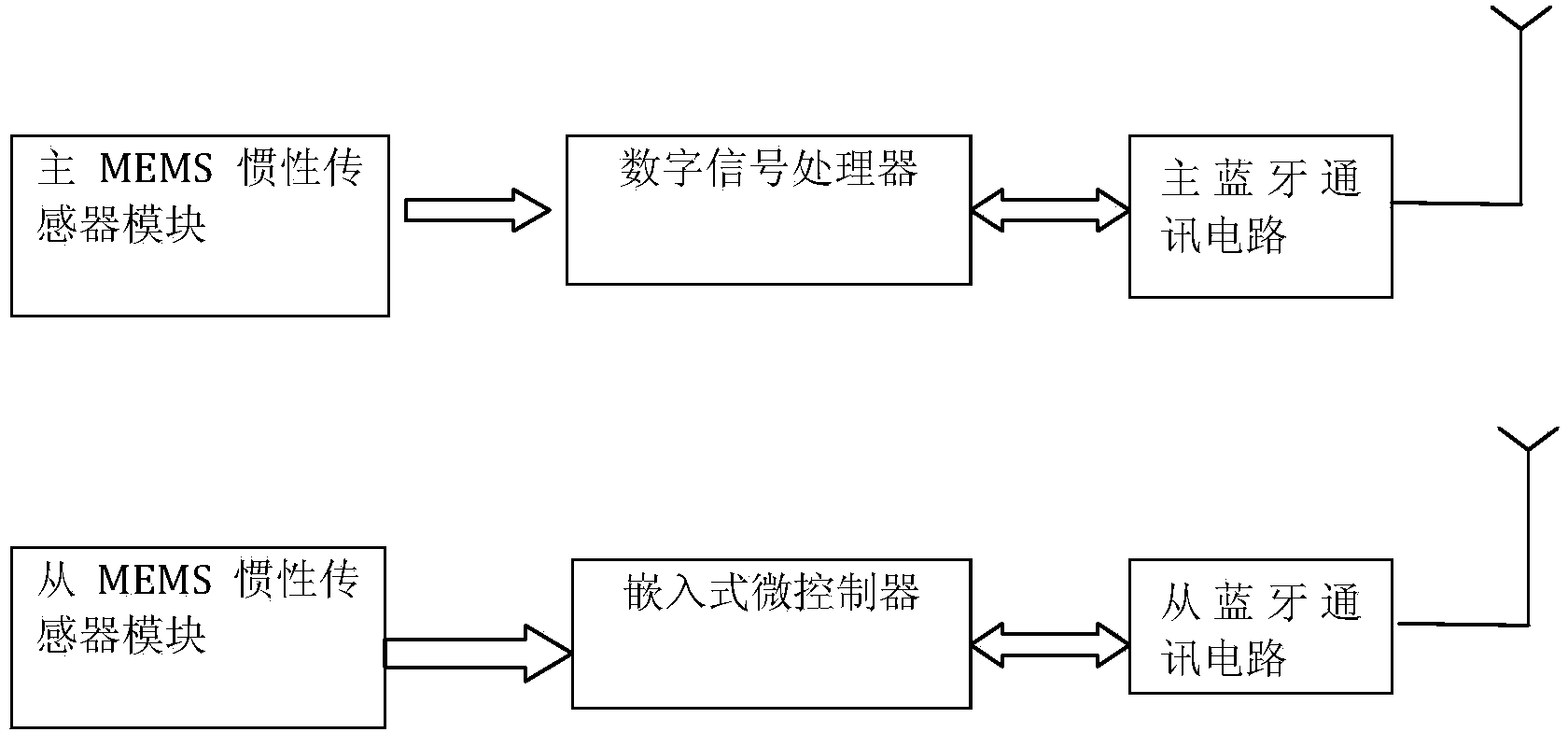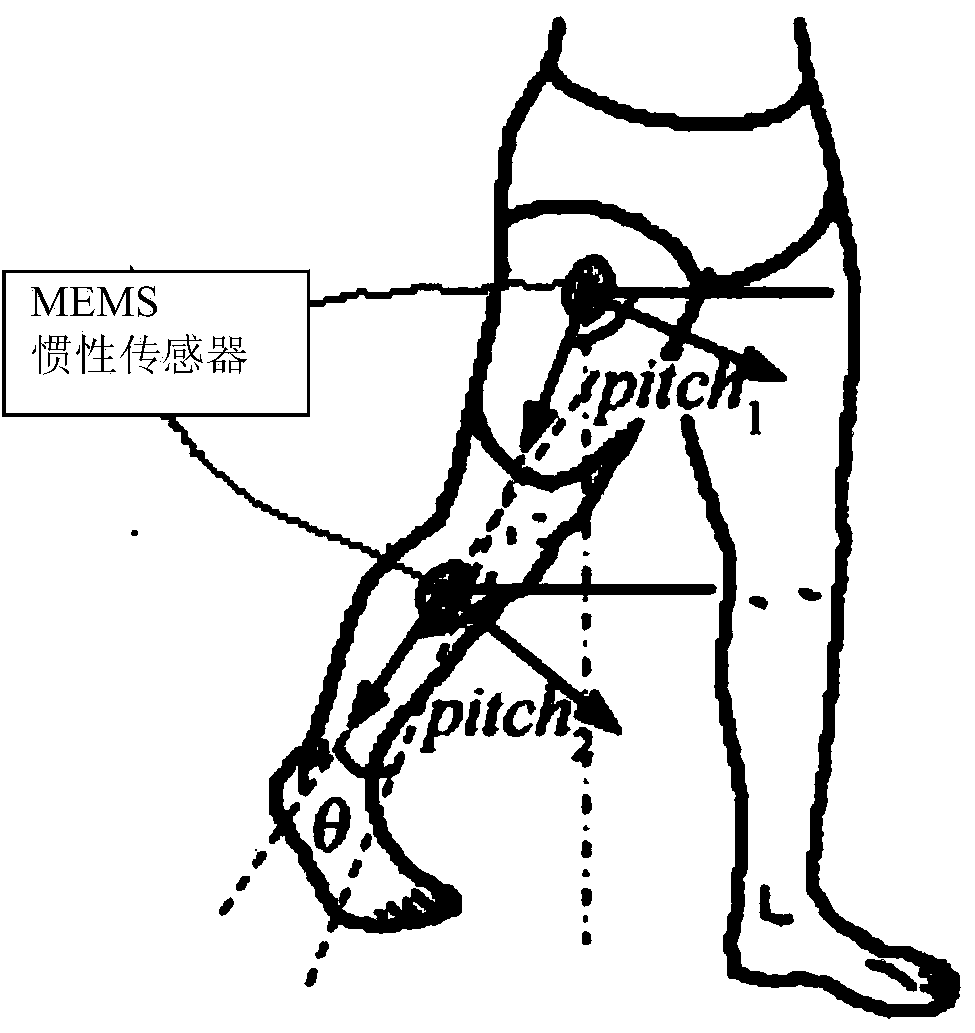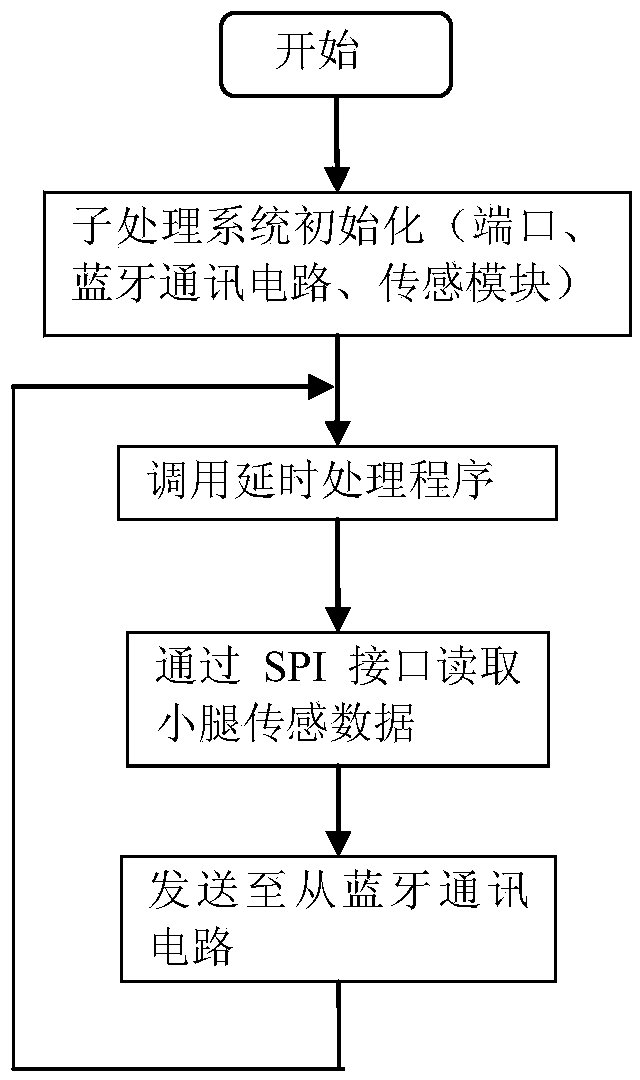Human knee joint angle wireless detection system and method based on MEMS inertial sensors
An inertial sensor, knee joint technology, applied in the field of medical devices, can solve problems such as less safety, high price, and wearer discomfort
- Summary
- Abstract
- Description
- Claims
- Application Information
AI Technical Summary
Problems solved by technology
Method used
Image
Examples
Embodiment 1
[0027] Such as figure 1 Shown is a wireless detection system for human knee joint angle based on a MEMS inertial sensor according to an embodiment of the present invention. As shown in the figure, the device includes: including: a main processing system and a node processing subsystem respectively placed at the thighs of the lower limbs of the human body, wherein: the main processing system integrates the thigh acceleration and angular velocity from the master and slave MEMS inertial sensor modules respectively Information and calf acceleration and angular velocity information, calculate the inclination of the lower limbs and calf of the human body, so as to obtain the knee joint angle information when the human body walks, and output the knee joint angle information to the exoskeleton robot control system through Bluetooth.
[0028] The node processing subsystem is composed of an embedded microcontroller, a secondary MEMS inertial sensor module and a secondary bluetooth commu...
PUM
 Login to View More
Login to View More Abstract
Description
Claims
Application Information
 Login to View More
Login to View More - R&D
- Intellectual Property
- Life Sciences
- Materials
- Tech Scout
- Unparalleled Data Quality
- Higher Quality Content
- 60% Fewer Hallucinations
Browse by: Latest US Patents, China's latest patents, Technical Efficacy Thesaurus, Application Domain, Technology Topic, Popular Technical Reports.
© 2025 PatSnap. All rights reserved.Legal|Privacy policy|Modern Slavery Act Transparency Statement|Sitemap|About US| Contact US: help@patsnap.com



